We traveled to Africa by ferry from Algeciras to Tangier. Although the Mediterranean is narrowest at the Straits of Gibraltar, the ride was longer than expected because Tangier is significantly west of Algeciras. The closest African port to Algeciras is Ceuta, an autonomous Spanish city on the African coast almost directly south of Gibraltar. The trip was rough and I spent the entire time on deck to avoid sea-sickness. There's nothing like a cold stiff wind in the face to calm one's tummy.
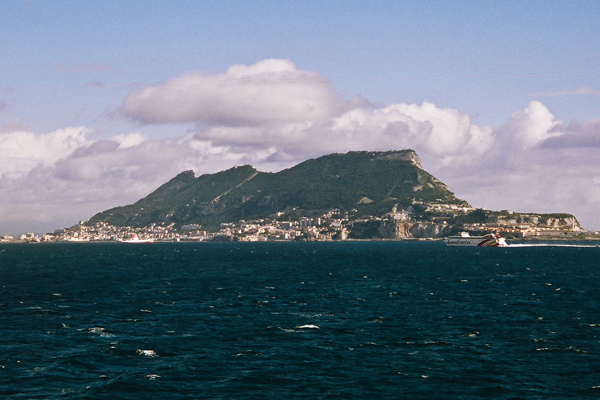
Our last sight of Europe was Gibraltar as we left the port. The white ship this side of the rock is a returning ferry similar to the one we were on.
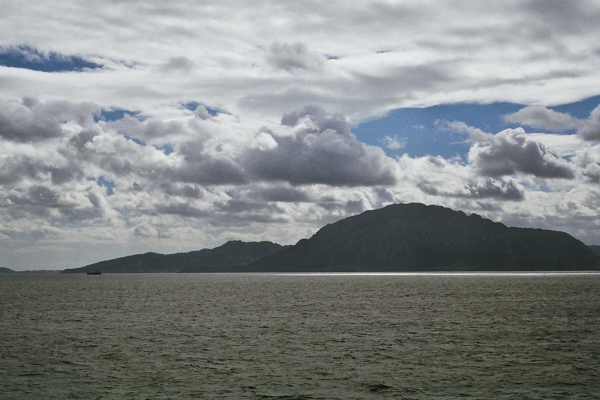
Gibraltar is undisputed as one of the Pillars of Hercules. The identity of the corresponding "pillar" on the African coast is disputed, but this may be one of the candidates. It was the highest mountain that I saw from the ferry.
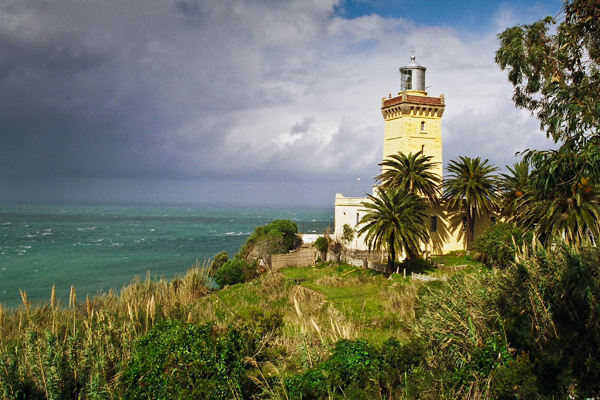
We debarked in the Tangier harbor and met Ismail, our Moroccan guide. The first sight-see was the Cap Spartel lighthouse, built in the mid-19th century overlooking the Atlantic Ocean. Glad we got into port before that looming storm came in! It was rough enough as it was.
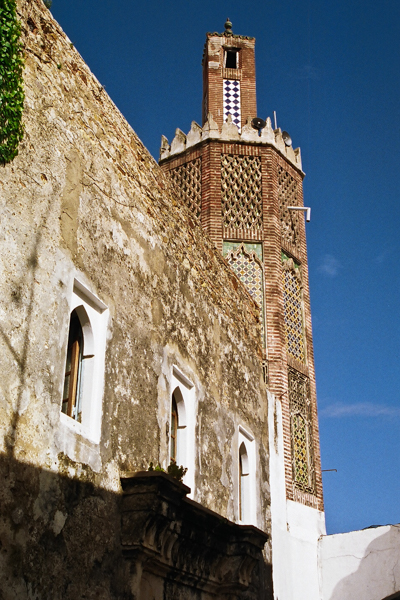
Come with me to the kasbah... the ancient fortified part of the city. The term derives from the same root as alcazaba, which we encountered at the Alhambra.
Ismail told us that every old neighborhood has three essentials: a mosque, a bathhouse, and a communal oven. The mosque provides a place for daily prayer and worship. The other two are needed because individual houses often lack these amenities.
If we saw a bathhouse in this neighborhood, I didn't get a picture of it.
This is the mosque.
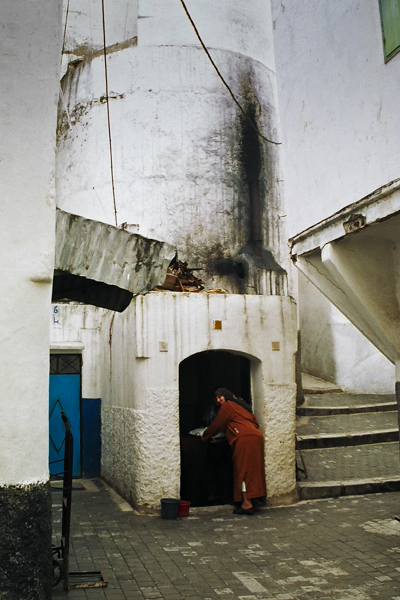
And this the oven.
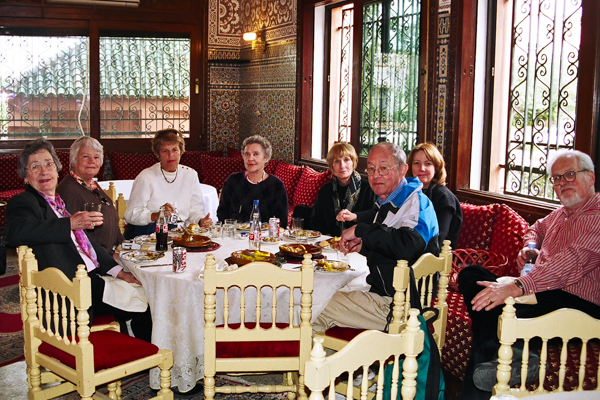
The next morning we departed for Fes (or Fez). At lunch, I took the opportunity to get pictures of our group. Several of these dear friends are no longer with us. May we remember to treasure each other while we can!
Clockwise from left: Jessma, Nell, Sue, Edith, Leslie, Nancy, Bob & Ray.
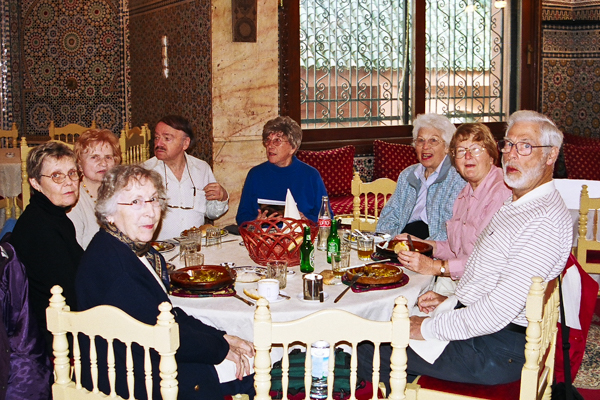
Clockwise from left: Jeanette, Jean, Rachel, David, Emmi, Maryce, Pat & Nestor.
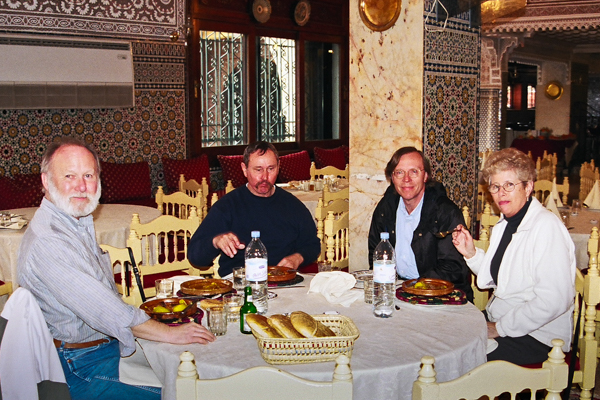
Clockwise from left: Jim, Tom, Gordon & Sharon.
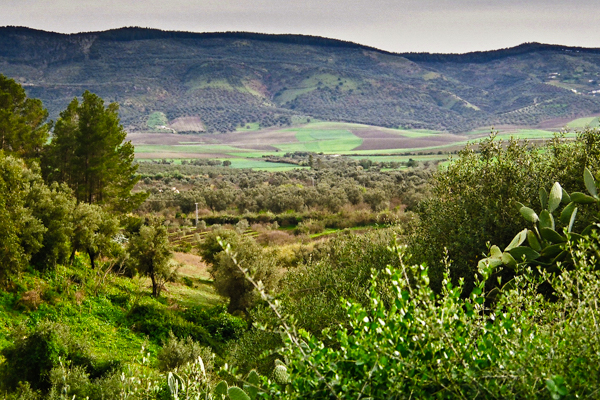
For no good reason I expected Morocco to be a barren sort of place. There are southern desert areas, but the places we visited were lush and beautiful.
This countryside surrounds the Roman city of Volubilis.
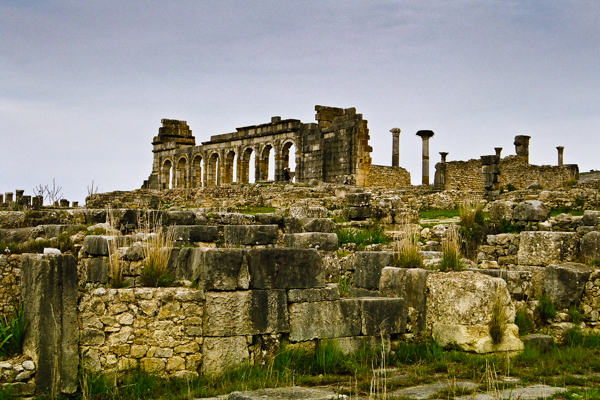
Volubilis, the western-most major Roman settlement, is a World Heritage Site founded in the 3rd century BC and occupied until the 11th century AD. The ruins were well-preserved until the great earthquake of 1755 that destroyed Lisbon and affected a wide area of the western Mediterranean.
What appears to be a cap on the standing column to the right of center is a stork's nest.

This triumphal arch honors emperor Caligula. Hard to imagine anyone honoring Caligula unless they really had to!

The city of Moulay Idriss takes its name from the Muslim ruler, Idriss I, buried there. It is seen here from Volubilis as the white town spread across the base of the mountains. At the time we visited, non-Muslims were not allowed to remain after dark, and we were limited as to where we could go.
Ismail assured us that the Lisbon earthquake that caused so much damage elsewhere in the region didn't affect Moulay Idriss at all, which was proof positive of the holiness of the city.

This is as close as we were able to get to the shrine within the city. As is evident, the day is waning and Ismail was hurrying us lest we violate the prohibition on non-Muslims. Some of the locals were giving us hard looks and we had no desire to tarry.
The mausoleum is behind the minaret.
Another historic city in the area that we did not visit is Meknes. We did stop on an overlook to see it before proceeding to Fes.
Click your "back" button to return to the previous page or click for our picture album.